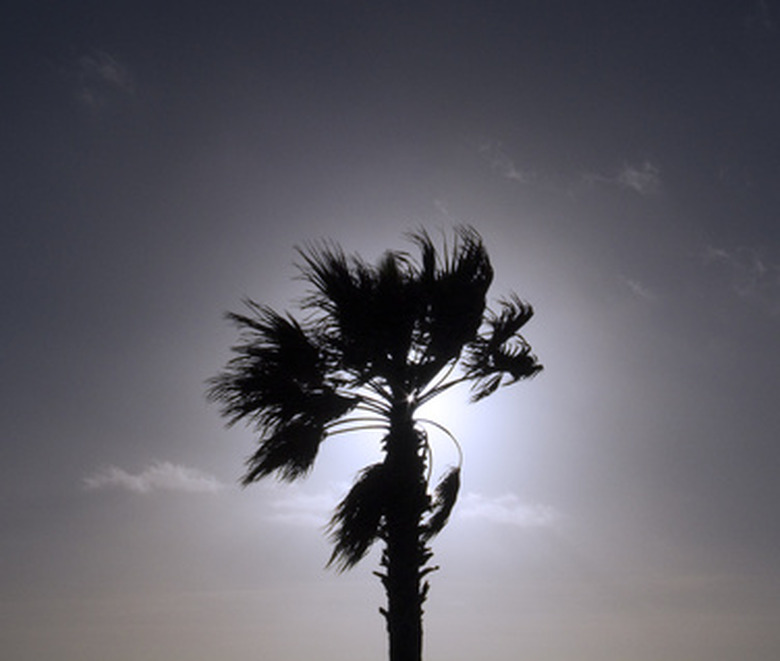How To Plant A Mexican Fan Palm Tree
It's easy to distinguish a Mexican fan palm tree (Washintonia robusta) from other palms: It is the giant of the palm world, growing up to 100 feet in height. Despite its origins in northern Mexico, this is a somewhat cold hardy plant that grows rapidly. It is also drought-tolerant and doesn't care what type of soil you give it. What it does need is a lot of sunshine and a lot of room to grow in USDA plant hardiness zones 8 to 11. Plant your Mexican fan palm in spring.
Step 1
Find a suitable planting site for your Mexican fan palm. Remember that the plant will get very tall, so look for overhead obstructions such as power lines. The site should also get full sun and have well-drained soil.
- It's easy to distinguish a Mexican fan palm tree (Washintonia robusta) from other palms: It is the giant of the palm world, growing up to 100 feet in height.
Step 2
Dig a hole twice the width and the same depth as the pot in which the palm is being grown. Use the gardening fork to rake the sides and the bottom of the hole to make it easier for the roots to penetrate the soil.
Step 3
Place the palm in the middle of the hole and pour some soil over the roots. Work it into the roots with your fingers. Fill the hole halfway with soil and then fill the hole with water. When the water drains, fill the hole the rest of the way with soil and use your feet to tamp the soil around the base of the plant.
Step 4
Water the palm until the water puddles.
- Dig a hole twice the width and the same depth as the pot in which the palm is being grown.
- When the water drains, fill the hole the rest of the way with soil and use your feet to tamp the soil around the base of the plant.
Step 5
Lay down a 3-inch layer of mulch around the circumference of the plant, keeping it 3 inches away from the trunk.
Step 6
Water the palm enough to keep the soil moist, not soggy, until it is established, which will take up to three months.
Mexican Fan Palm Tree Care
Under ideal growing conditions, a young Mexican fan palm tree can grow 6 feet a year, reaching heights of 100 feet or more. In mature trees, dead fronds usually drop off the tree as it grows. Younger trees, however, tend to hold onto these dead fronds. Some cities legally mandate that tree owners must remove the thatch from their trees — a daunting task that requires a professional when the trees get taller. Mexican fan palms grow in U.S. Department of Agriculture plant hardiness zones 9 through 11. Although they like well-drained, moderately rich soil, they can survive in sand and poor soils. You can grow a young plant in a container to give your deck or patio a tropical look, but do not plant one in a small yard since they need large, open areas. There is no known cure or prevention for this fungus. Remove infected trees as soon as possible and avoid planting other palms in the area. Similarly, there is no known treatment for Thielaviopsis trunk rot, which can cause the canopy to fall off the tree without warning.
- Lay down a 3-inch layer of mulch around the circumference of the plant, keeping it 3 inches away from the trunk.
- Similarly, there is no known treatment for Thielaviopsis trunk rot, which can cause the canopy to fall off the tree without warning.
Things Needed
- Shovel
- Gardening fork
References
- "The Gardener's Guide to Planting and Growing Trees;" Michael W. Buffin; 2007
- Floridata: Washingtonia Robusta
- University of Nevada Cooperative Extension: Pruning Palm Trees
- University of Florida IFAS Extension: Washingtonia Robusta: Mexican Fan Palm
- University of California: Invasive Plants and Wildland Health
